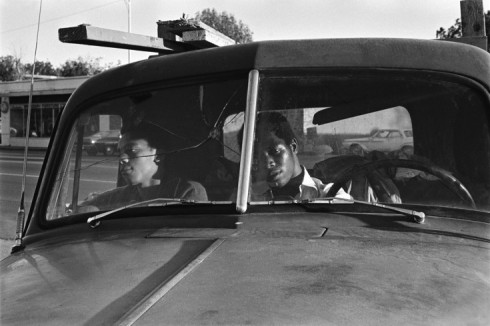It is a glorious day indeed when among the litter of unwrapped packages, volumes of real physical books, each yelping to grasp the teat of the great publicity engine, I hold in my hands a book by the great American photographer Eugene Richards.It occurs to me that photographers face some of the same challenges posed by the digitalization of the world except in their case the advent of phone cameras and cheap and easily portable point-and-shoot devices has degraded the value of photography.
One time Magnum photographer Eugene Richards spent time in Boston (the setting for his second monograph Dorchester Days) graduating from Northeastern University. He went to the Arkansas Delta as a VISTA volunteer in 1969,stayed four years and returned periodically. His self funded new opus
Red Ball of a Sun Slipping Down draws from his experiences in the Arkansas Delta: He explains:
Red Ball of a Sun Slipping Down is about then and now, memory and change. Black-and-white photographs made long years ago and never printed are interwoven with recent color work and, in turn, a short story that relates my encounter with a tough-minded, impoverished delta woman but also addresses my own struggle with aging and mortality. Red Ball of a Sun Slipping Down is a timely story, an experiment in bookmaking. But because the book speaks of what for some people are off-putting issues—race, poverty, and aging—I feel obliged to self-publish it.
The Arkansas Delta has been called at different times the soul of the South, the land of opportunity, a place ruled by race, a forgotten place. Eugene Richards (born 1944) first went to the delta as a VISTA volunteer in 1969. It was less than a year after the assassination of Dr. Martin Luther King, Jr., a time when cotton, religion, prejudice and poverty were what characterized most peoples’ lives.
The delta was as starkly beautiful back then as it is now, with cotton fields running to the horizon and small towns that appeared to rise up out of the land. I thought I’d be there a year, but ended up staying more than four years, working for an anti-poverty organization that I helped found with other former VISTAs, then as a reporter. I stayed until I just couldn’t anymore.
As time passed I went back to visit the McGowans, the Landers, Porter Lee and Will Davis, who were sharecroppers and the most generous people I’d ever known, though they had nothing. You’d drive past the carefully tended fields and the plantations with their miles of white fencing out to the sharecroppers’ shacks, where privation, rejection, and hunger were the norm.
I returned to the delta in 1986 when working on a book on American poverty, then eight years ago to search for the few remaining sharecropper shacks. The last time I went back, I photographed church services, tractors in the fields, children walking home as the sun was starting to set. But it wasn’t until this past winter that I found myself flipping through my old black-and-white contact books, the ones from the late ’60s and early ’70s, searching for pictures of life in the delta that I never took notice of before. And as I did this, more than forty years of memories began to well up and overlap.
Currently reading Hold the Dark by William Giraldi (WW Norton )



Leave a comment